EMESRT Projects Update – Control Framework workshops deliver results
Fires on mobile equipment can result in fatalities and be potentially catastrophic if they occur in underground operations. They also damage equipment and cause production losses.
Similarly, personnel working with tyres are up to 10 times more likely to be fatally injured while at work than other maintenance personnel. Fatality causes are well understood, and the ongoing industry challenge is ensuring that known controls are applied and new controls that are less dependent on people, are developed.
In early 2019, EMESRT (Earth Moving Equipment Safety Round Table) began two new industry level projects:
- Mobile Equipment Fire Management
- Tyre and Rim Management
The first step for each project was to reach out to stakeholders to define and better understand the problem. These initial conversations led to a series of workshops with experienced mining industry personnel that have developed an EMESRT Control Framework (CFw) for each project. From this work, Self-Assessment Tools based on shared industry knowhow and experience have been prepared for review and adaptation by operating companies.
This experience and knowhow has been built from and referencing multiple information sources including:
- EMESRT
Design Philosophies - Regulator
information from multiple jurisdictions – incident reports, bulletins,
publications analysis, position papers, etc - Operating
site, company and industry documents - Research
and technical information, e.g. incident taxonomies - Relevant
Standards and Guidelines, e.g. ISO 19296 Mining – Mobile machines working
underground – Machine Safety First edition 2018-11
The CFw approach is particularly useful for understanding those business inputs that are wholly-or partly dependent on the decisions and actions of people. It also provides clarity in ongoing dynamic interactions between multiple required operating states, e.g. fit for purpose equipment is selected, approved for use then maintained and operated by competent personnel.
“As anticipated, a draft self-assessment tool was developed and released post workshop to participants for review and testing. Feedback received will be used to further develop/enhance the self-assessment tool. We then intend to distribute the tool to a wider audience to gain further feedback,” said EMESRT Rio Tinto representative Mark Geerssen.
At the conclusion of the workshops, participants formed two industry level project working groups:
- *Tyres and Rims: Project 3 – This project is led by EMESRT Peabody representative David Champion
- Equipment Fires: Project 4 – This project is led by EMESRT Rio Tinto representative Mark Geerssen
*This project was initially led by Alcoa representative Ray Wilson who retired in November 2019. The EMESRT Advisory Group acknowledges the excellent work and dedication injected by Ray into this project since its formation and appreciates David Champion taking on the lead role.
The two projects are an extension of the original work carried out in 2007 by EMESRT and the industry in developing:
- Design
Philosophy 2: Tyres and Rims - Design
Philosophy 4: Fires
Project working groups will continue to review, update and publish a revised version of these valuable industry resources as each project continues to develop.
“If you look at industry statistics, published by various safety entities and government departments, in both equipment fires and tyres and rims, the numbers are frightening. Group members for both projects are passionate about tackling the activities identified in the project scopes and making a difference, however small, to mitigate some of the risks associated with the work we do,” said EMESRT Rio Tinto representative Mark Geerssen.
EMESRT Peabody representative Dave Champion said, “We must not stifle any individual ideas/suggestions but adopt an open mind approach when discussing options. If the work done by the working groups can influence and/or challenge the status quo of equipment fire incidents at any level, including questioning current training competencies, it can only be a positive outcome for the industry.”
Since its formation in 2006, EMESRT has tackled a number of industry challenges, including but not limited to vehicle interaction, and these two projects support EMESRTs vision ‘A mining industry free of fatalities, injuries and occupational illnesses associated with operating and maintaining earth moving equipment.
“This work, and other initiatives, would not be possible if it wasn’t for the EMESRT members and their continued support, thank you one and all,” EMESRT Advisory Group.
End…

